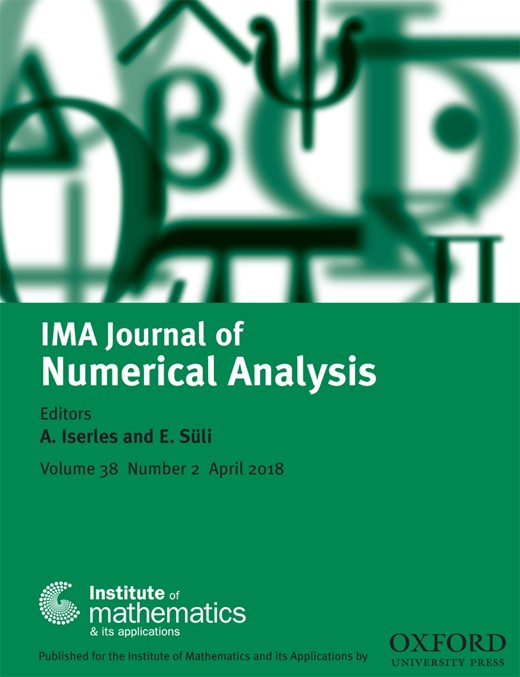-
Views
-
Cite
Cite
S Falletta, BEM coupling with the FEM fictitious domain approach for the solution of the exterior Poisson problem and of wave scattering by rotating rigid bodies, IMA Journal of Numerical Analysis, Volume 38, Issue 2, April 2018, Pages 779–809, https://doi.org/10.1093/imanum/drw073
Close - Share Icon Share
Abstract
We consider two exterior model problems in two dimensions: the Poisson equation and the problem of waves scattered by rotating rigid bodies. The exterior domain is the |${\mathbb R}^2$| complement of a bounded rigid obstacle, subject to a rotation in the time-dependent case. By using a fictitious domain approach, we artificially extend the solution to the whole of |${\mathbb R}^2$|. Then, we propose and study a finite element–boundary element coupling method for the solution of the problem in a finite computational domain, delimited by an artificial boundary |${\mathcal B}$|. The transmission conditions between the interior and exterior domains are imposed on |${\mathcal B}$| by a boundary integral equation coupled first to the Poisson, and then to the wave equation, these being defined in the interior domain. The Dirichlet conditions on the boundary of the physical obstacle are enforced weakly by means of Lagrange multipliers. The main advantage of this approach is that the finite element mesh can be chosen independently of the geometry of the obstacle. Moreover, in the time-dependent case, the proposed method allows the use of a given fixed mesh, thus avoiding the complexity of constructing at each time step a new finite element computational mesh.
For the Poisson problem we obtain convergence results when the space discretization is performed by standard finite elements in the interior domain and by a Galerkin boundary element method on |${\mathcal B}$|. For the wave equation, we perform a full space discretization by finite elements, coupled with a Crank–Nicolson time-stepping scheme. On the boundary |${\mathcal B}$|, the boundary element method and a convolution quadrature based on the backward differentiation method of order 2 are used. We present numerical results for nontrivial data, which validate the proposed numerical approach. In the wave equation case, these also include rotating obstacles and external sources.





